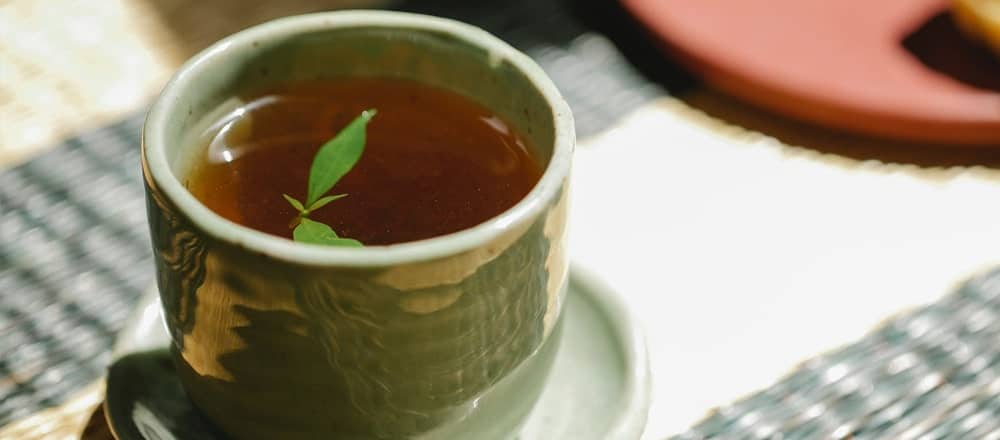Is Tea Acidic or Alkaline – Find Out Here

People have started to care more about what Tea can offer apart from its great taste. We know, for example, that it contains a wealth of vitamins, minerals and other antioxidants capable of improving life in small yet significant ways.
But there’s more. Much more. The following article will explore, “Is Tea Acidic or Alkaline?” to unlock one sizable piece of the puzzle.
We will first explain the meaning of acidity and why it matters at all. This will lead us to the main question, which is probably the reason you’re reading, before seeing whether the rules apply to each type of Tea available.
All that’ll be left, then, will be to buy from The Kent and Sussex Tea and Coffee Company. We pack our Loose Leaf Tea and Coffee fresh to order, ensuring quality and consistency.
Table of contents

What is Acidity and Why Does it Matter?
Allow us to start at the beginning. We need first to understand the basics of acidity and what influence it has on food and drink. Most important, perhaps, is to note that there’s a difference between acid-forming products and products with acidic pH.
The former is something that promotes acidity in the body, while the latter is what we’ll be focusing on here.
When we say “pH”, what we’re referring to is a measure of acidity; the lower the value, the more acid in the food or drink. Take lemon juice, a product that most would agree is acidic in nature, which has a pH value of about two.
Dairy milk, in contrast, can have pH levels anywhere between 6.5 and 6.7 – the same as Milk alternatives for Tea and Coffee. But what difference does it make?
Alkaline diets, though of sometimes questionable science, have become increasingly popular in recent years, particularly among those with acid reflux or teeth issues.
What’s more, preliminary research has shown correlations between these diets and improvements in kidney and heart health. The chances are you already have your reasons, so let’s address the question, “Is Tea acidic or alkaline?”

Is Tea Acidic or Alkaline?
We’ve established that, when it comes to the pH scale, neutral or “low” is around six or seven. “High,” meanwhile, is anything under four. Where does this leave your morning cuppa?
Is Tea acidic or alkaline? The truth is that it depends. Factors worth considering include the Type of Tea, how much you drink, and what you add to it (e.g. serving it with milk or sugar).
Fundamentally, most varieties are only mildly acidic, although there are rare instances of some being as low as three on the pH scale. If you’re looking at your Tea cupboard and wondering where your choice brew falls, worry not.
The time has come to answer the smaller questions in the big question – such as, “Is Green Tea acidic?”, “Is Camomile Tea acidic?” and “Is Redbush Tea acidic?”

Is Green Tea Acidic the Same as Black Tea?
Green, Black, White and Oolong all come from the same place: The Camellia sinensis (Tea) plant. Logic would have it, then, that they all have the same pH levels?
Not so. The processing of the leaves, which, among other qualities, involves varying levels of oxidation, means they’re indeed different in more than one way. The following table should hopefully give you a better idea:
| Tea Type | Average Acidity Level (pH) |
| Black Tea | 4.9 – 5.5 |
| Green Tea | 7 – 10 |
| Oolong Tea | 5.5 – 7 |
| White Tea | 8 – 10 |
Black Tea is the most processed type, which appears to increase its acidity levels. Green and White Tea, on the other hand, are in the neutral to low area of the scale.
The bottom line is that, should you want to cut down acidity in your diet, these two are the varieties to choose. If you’re not the least bit worried about such a factor, then their counterparts remain excellent options.

Is Herbal Tea Acidic?
A quick recap: We understand that varying pH levels is what makes Tea acidic. We know, too, that infusions from the Camellia sinensis plant find themselves in different areas of the scale.
Let’s move on to investigating Herbal Tea acidity. Once again, we’ve created a comprehensive table showcasing just a few popular varieties and their respective pH levels.
| Type of Herbal Tea | Average Acidity Level (pH) |
| Peppermint Tea | 6 – 7 |
| Camomile Tea | 6 – 7 |
| Rooibos Tea | 6 – 7 |
| Hibiscus Tea | 6.5 – 6.8 |
| Lemongrass Tea | 5.8 – 6.3 |
| Chrysanthemum Tea | 7 – 7.4 |
| Ginger Tea | 7 – 7.5 |
These are estimates and should not be treated as concrete evidence concerning Herbal Tea’s acidic nature. What they are, in other words, are rough guides to addressing queries like, “Is Peppermint Tea acidic?”, “Is Camomile Tea good for acidity?” and “what is Ginger Tea’s acidity level?”
The rule of thumb is that Herbal Tea tends to be in the neutral area, which is terrific news for those trying to find balance.
Buy Low Acid Tea Online or In-store
This article has explored, “Is Tea acidic or alkaline?” from all angles, including Green Tea’s acidity level and its countless counterparts.
Hopefully, you have what you came for, but do stay because we stock many types of Low Acid Tea.
From Peppermint to Oolong; Rooibos to everyone’s favourite, Black Tea, the possibilities are nearly endless. Find your choice brew today.

 Loose Leaf Tea
Loose Leaf Tea Pyramids
Pyramids Tea Bags
Tea Bags Africa
Africa Assam
Assam Ceylon
Ceylon Chinese
Chinese Darjeeling
Darjeeling European
European Indian
Indian Japan
Japan Nepal
Nepal South East Asia
South East Asia Ayurveda Tea
Ayurveda Tea Black Tea
Black Tea Chai Tea
Chai Tea Flowering Tea
Flowering Tea Fruit Tisanes
Fruit Tisanes Green Tea
Green Tea Herbal Tea
Herbal Tea Matcha Tea
Matcha Tea Oolong Tea
Oolong Tea Organic Tea
Organic Tea Pu erh Tea
Pu erh Tea Rooibos Tea
Rooibos Tea White Tea
White Tea Asian Coffee
Asian Coffee Caribbean Coffee
Caribbean Coffee Central American Coffee
Central American Coffee South American Coffee
South American Coffee Coffee Blends
Coffee Blends Decaffeinated Coffee
Decaffeinated Coffee Espresso Coffee
Espresso Coffee Ethically Sourced Coffee
Ethically Sourced Coffee Flavoured Coffee
Flavoured Coffee Organic Coffee
Organic Coffee Single Origin Coffee
Single Origin Coffee Chocolate 1
Chocolate 1 Chocolate 2
Chocolate 2 Chocolate 3
Chocolate 3 Chocolate 4
Chocolate 4 Chocolate 5
Chocolate 5 Chocolate 6
Chocolate 6 Chocolate 7
Chocolate 7 Chocolate 8
Chocolate 8 Chocolate 9
Chocolate 9 Loose Tea Filters
Loose Tea Filters Tea Accessories
Tea Accessories Tea Bricks
Tea Bricks Tea Caddies
Tea Caddies Tea Caddy Spoons
Tea Caddy Spoons Tea Gift Ideas
Tea Gift Ideas Tea Infusers
Tea Infusers Tea Strainers
Tea Strainers